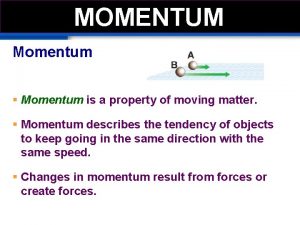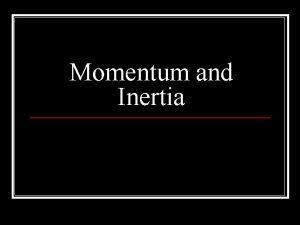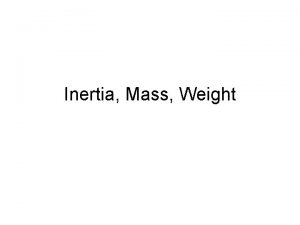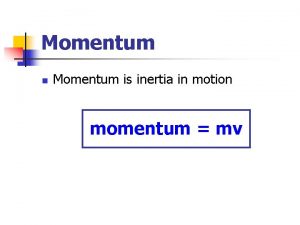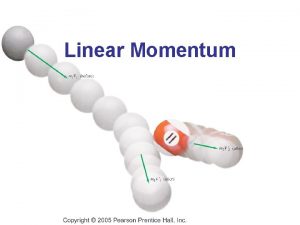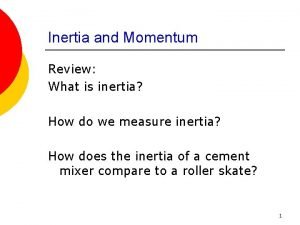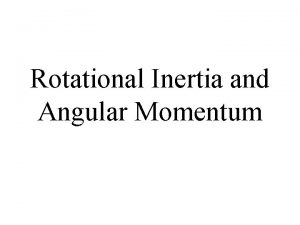Topic 3 1 Momentum Momentum AKA Inertia in












- Slides: 12

Topic 3 -1 Momentum

Momentum AKA: Inertia in motion Defined: Resistance to change based on your mass and velocity Examples: Slamming on the breaks Turning too fast Mathematically defined: your mass times your velocity p=mv

Impulse Defined: Force required to change momentum Requires Force and time to change momentum AKA: Change in Momentum Therefore: Ft = Δ(mv)

Changing Momentum Increasing (ex. Hitting a golf ball) 1. Apply as much force as long as possible 1. 2. Force will vary from instant to instant Force will be given as an average Decreasing (ex. slowing a car that is about to crash) 1. The longer the time interval, the smaller the force of impact

Sample Questions A golfer hits a 0. 05 Kg golf ball, giving it a speed of 75 m/s. What impulse does he impart on the ball? Wayne hits a stationary 0. 12 Kg hockey puck with a force that lasts 1. 0 x 10 -2 seconds and creates a velocity of 20. 0 m/s. With what force did Wayne hit the puck?

Special Consideration If an object bounces; its change in momentum is actually greater than if an object hits and sticks. Remember negatives show directionality so the initial velocity would be negative to show it moving the opposite direction compared to the final velocity (final velocity + Initial velocity)

Conservation of Momentum Defined: Momentum is neither created or destroyed; only transferred from one object to another. Mathematically: (m 1 v 1)I + (m 2 v 2)I = (m 1 v 1)F + (m 2 v 2)F

Types of Collisions Elastic: Objects collide and move separately from one another after collision Inelastic: Objects collide, stick, and move as one object Recoil: Objects start together and move apart and separately Formulas: Same as on previous slide (m 1 v 1)I + (m 2 v 2)I = (m 1+m 2)v. F v. I(m 1+m 2) = (m 1 v 1)F + (m 2 v 2)F

Sample Problem 1 The sumo Twins have a combined mass of 200 Kg and are zooming around in a 100 Kg bumper car at a speed of 10 m/s. They collide into Melinda’s car, which is standing still. Melinda has a mass of 25 Kg. After the collision, the twins continue to move forward at a speed of 4. 12 m/s. How fast is Melinda’s car traveling across the floor?

Sample Problem 2 Most accidents have rubber Necker's. Molly slowed her 800 Kg sports car down to 13 m/s to on look at a grizzly auto wreck. Unfortunately, Bubba in his 1200 Kg truck never slowed down from 25 m/s. What would their combined velocity be if they locked bumpers?

Sample Problem 3 Diver Dan, a 65 Kg spear fisherman shoots a 2 Kg spear with a velocity of 15 m/s trying to hit a fish. He misses the fish. The recoil of the spear gun causes Dan to move backwards at what speed?

Special Consideration If two objects are both initially moving and headed in different directions; we need to treat one of their initial momentums as a negative value to show directionality. Think of a car headed north at 5 m/s and a car headed south at 5 m/s collide. One of their initial momentums would be represented as a negative value
